SUMMARY
This is AI generated summarization, which may have errors. For context, always refer to the full article.

Key officials of the Duterte government on Monday, September 14, found themselves airing different positions to the public over the transportation department’s move to reduce physical distancing in trains, buses, and other public vehicles.
It’s the latest show of discord among top officials tasked to craft and implement policies to address the pandemic.
On Monday night, the issue once again sparked debate among President Rodrigo Duterte and his key officials.
Citing studies done by a coalition of health care professionals in the Philippines, Health Secretary Francisco Duque III said experts warned that if distancing was decreased from 1 meter to 0.75 meters, and ridership was increased to 50%, there could be some 686 new cases per day.
After a month, this would amount to 20,580 cases, and if multiplied by the current case fatality rate of 1.6, some “3,951 deaths per year” may occur.
Duque said he would raise this at an interagency task meeting on Tuesday, September 15, “Para cuentas claras ho (so it’s clear).”
“So whatever decision is made, at least it’s clear that there was this study or modeling, and I think there are other studies with different findings too that don’t have as severe or grave projections,” he said in Filipino.
Interior Secretary Eduardo Año, meanwhile, backed medical experts who warned against decreasing distance between commuters. He stressed it was essential to listen to experts as they were no studies that showed the concrete effects of reducing physical distance.
“I agree with our health workers, health sectors, that this is what will start a spike and set us off of a roller coast back to where we started. We’ll go back to ECQ again so this should be studied carefully and be science-based,” he said in Filipino.
Año likewise pointed out that the 1-meter distance was part of the government’s “minimum health standards,” which should be observed consistently in all settings. He pointed out it was also part of the definition of what a “close contact” was and so tweaking the measure would result to change in crucial health standards.
“These are difficult times and we will regret it if many people get sick after violating the 1-meter distancing that we follow as a minimum everywhere – in the office, mall, our homes, but when it comes to transportation, it’s suddenly gone,” Año said in Filipino.
“We have to be consistent here. Not only in definition, but for the safety of everyone,” he added in Filipino.
Roque on Monday night admitted he had difficulty managing the situation before the public as officials seemed to clash with one another over the measure.
“(Transportation Secretary) Tugade and the Health Department ‘no, pinagsasabong silang dalawa (they’re being pitted against one another),” Roque said, adding he told the public Duterte would make a final decision “based on data.”
Fault lines
The controversy exposes fault lines within the Duterte government.
One group, composed mainly of the government’s economic advisers, supported the Department of Transportation’s (DOTr) easing of the required distance between commuters, from 1 meter to only 0.75 meter starting Monday.
The DOTr insisted that the policy – described as “optimizing physical distancing” measures – had been “based on scientific studies,” such as the one by the International Union of Railways.
Backing the DOTr, Cabinet Secretary Karlo Nograles said last Saturday, September 13, that it was a “calibrated move” to help reopen the economy. He said “additional health protocols” will be put in when we reduce physical distancing between commuters.
Like Nograles, Acting Socioeconomic Planning Secretary Karl Chua said last Friday, September 9, that the government’s economic development cluster signed and presented a joint position paper to the task force handling the pandemic “to further open up, safely and sufficiently, the public transportation system.”
Opposite view
But the Department of Health and Año, who is vice chair of the Philippines’ coronavirus task force, did not agree with the DOTr’s latest move.
Año expressed his reservations about easing the minimum health standard while the DOH stood by its recommendation on physical distancing.
In a radio interview on Tuesday morning, September 15, Año said the DOTr released the guidelines for reduced physical distancing without consulting health experts.
“Hindi ‘yan dumaan sa IATF (Those did not go through the IATF),” Año said, even as the DOTr asserted their measures were approved by the IATF.
The DOH stressed that while the DOTr wanted to “optimize physical distancing in transportation,” Filipinos must practice minimum health standards like wearing of face masks and face shields to prevent transmitting the coronavirus.
“If possible, choose to participate in activities or use transport options that can afford at least 1-meter distancing,” the DOH added, as it implored senior citizens and immunocompromised individuals who do not feel well to stay home.
Medical experts likewise opposed the DOTr’s move to ease restrictions on public transportation as they warned it was still too early in the Philippines’ pandemic to institute such measures. The Philippines continues to see an increase in cases with some 3,000 to 4,000 infections reported daily.
“Cases will surely rise and hamper our recovery if we do this now,” said leading epidemiologist and Healthcare Professionals Alliance for COVID-19 (HPAAC) member Dr Antonio Dans.
The group is the Philippines’ largest organization of health workers, and includes medical organizations that earlier called on the government to review its pandemic response as the country was “losing the battle” against COVID-19.
Meanwhile, transportation groups also earlier suggested that the government increase the transportation system’s capacity by hiring drivers and transportation service providers like inactive bus companies.
Where things stand
The DOTr’s proposal prevailed, at least for the time being.
Roque said in a separate briefing on Monday that the government’s coronavirus task force will once again discuss the DOTr’s measure which disregarded the recommendations of the DOH, health experts, and the World Health Organization.
Roque added that the policy had yet to be presented to Duterte, who has the final say on key measures to address the pandemic.
“I am appealing to concerned agencies to thoroughly study their proposal to reduce social distancing in public transportation,” said Duterte’s longtime aide, Senator Bong Go, in a Senate health committee hearing on Tuesday.
Go added that as chair of the Senate health committee, he always reminds the executive department to “put the interests, welfare, and life of every Filipino first.”
“Let’s not rush it, because with our every move, the lives of our countrymen are at stake,” Go said in Filipino.
The DOTr’s decision to reduce physical distancing measures is the latest flashpoint in the government’s struggle to balance reopening the economy while ensuring health standards are in place to keep the coronavirus at bay.
If approved, physical distancing will gradually be reduced further to 0.5 meters on September 28 and 0.3 meters on October 12.
Even before the coronavirus pandemic, jam-packed modes of public transport have long been a problem in the Philippines, which has suffered a dismal transportation infrastructure for decades.
Experts have long feared that public transport, if left unrestricted, can further fuel the rise in coronavirus cases in the country. – with reports from JC Gotinga and Rambo Talabong/Rappler.com
Add a comment
How does this make you feel?
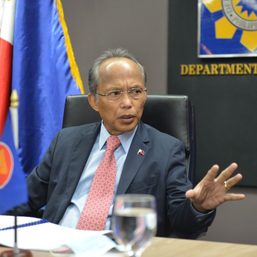
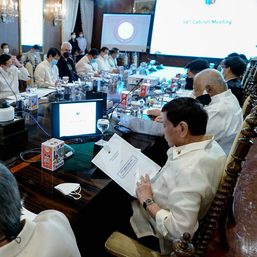
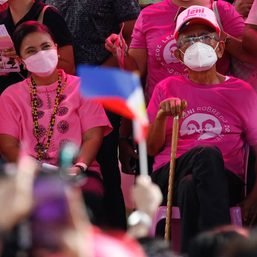
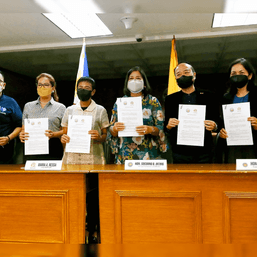
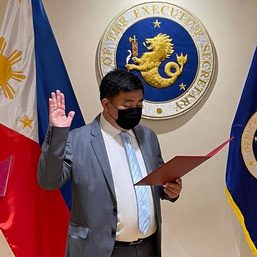
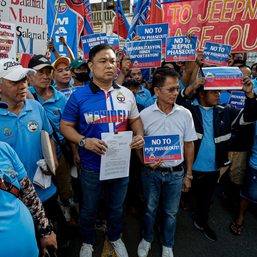
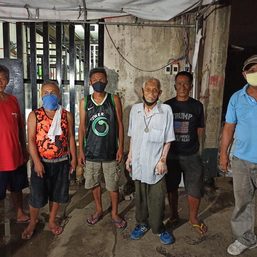
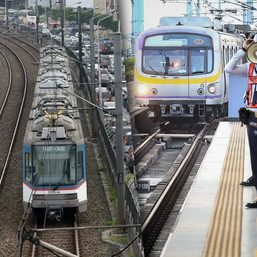
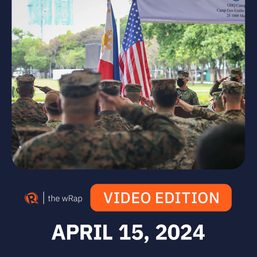
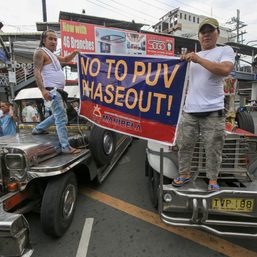
There are no comments yet. Add your comment to start the conversation.